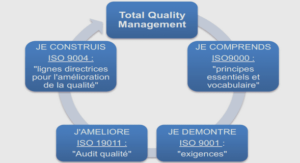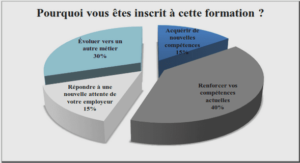USING ROLE PLAY AND SIMULATION TO TEACH
LANGUAGE FUNCTIONS
USING ROLE PLAY AND SIMULATION TO TEACH LANGUAGE FUNCTIONS
Role plays and simulations are well established strategies for developing a good command of the language particularly knowledge, understandings and skills that require human interaction. They are a means to exploit various language functions that pupils need to communicate mainly outside the classroom. The idea that underpinning role plays and simulation is that they provide a suitable environment for experimental learning, they are best utilized approaches to facilitate interactive and collaborative activities. In addition, role plays and simulations are necessary to be tackled in classroom for, as said above, they give the students opportunities to face after and even during their studies all the different kinds of social acts. In other words, role plays and simulations are aimed at allowing pupils to be able to use the items of language function appropriate to the given situation. Furthermore, the students should be good at expressing themselves easily and fluently while performing language function in and outside the classroom. Thus, we are bound to study in depth these two communicative activities.
Differences between “role play” and “simulation”
As we have seen above, role play and simulation are both communicative activities and they have almost the same goal. They provide students opportunities to put into practice the language functions needed in everyday life for example: greeting, talking to a boss, expressing opinions…The pupils therefore are put in an environment which is not the 15 classroom environment but outside the class thanks to the situations and the roles they play during the role play and the simulation. Furthermore, thanks to these two communicative activities, students can freely put into practice the language they have just learnt, they create a situation for the learners to actively interact in the language, thereby making language learning more meaningfully (KRISH, 2001). Apart from that, in using role play and simulation in the classroom, teachers try their best to make the students feel at ease when they are facing a real face-to -face situation. Teachers like CUMMING and GENZEL says:” I want my students to become more comfortable when visiting restaurants or to be more at ease in business situations such as negotiating a contract». To sum up, role play and simulation can be used interchangeably; their common aim is to provide opportunities for interaction and for initiating communicative skills. Although they are separate activities, they are often conducted at the same time. Even if, they complement each other, there are clear differences between them. LADOUSSE (1987) says: “Simulations involve different complicated activities (…) whereas role play can be a quite simple and brief technique to organize…” In the following part, we are going to see in depth the real differences between these two communicative activities.
Definition of role play
It’s clear that although role play and simulation activity are “cousins», there are also significant differences. First of all, role play is a teaching technique in which the students are asked to identify with the given familiar or non familiar roles and to interact with the other role characters within the socio cultural situation. According to MATTHEWS et al [eds] (1985) role play is a classroom activity in which students play parts or roles and often work in pairs or in groups. The precise content and roles are often determined in advance by the teacher, usually by providing role cards. Role plays aim to prepare students for the real world outside the classroom by giving them fluency practice. In other words, the participants in the role play will get a situation to work with and the role card they have at their disposal will state who they are, what should they do and how should they behave. Furthermore, role play can then be defined as a learning activity in which learners behave in the way somebody else would behave in a particular situation. Students are guided on what to do or to think, they also know what the other will say and do. 16 Let us consider these examples These examples we are going to see are one of the items of language functions suggested in the official syllabus of classes de premiere which is about the people at work, especially about “a job interview” and about “complaining”. After asking the students to form a group of two persons, that means in pairs, the teacher gives a situation to each student, most of the time in a role card. EXAMPLE 1 – Student A You are an employer interviewing someone applying for the post of a secretary for your firm – Ask for B`s – name – His/her age – Educational background – Qualification – Marital status – Professional experience – Motivation for applying – Salary pretention – Student B You are B, the applicant – Answer all A`s questions – Ask A if there is a special bus to pick the staff because you live so far away from the work place EXAMPLE 2 -Student A You are the sales manager of a small firm. You receive a telephone call from an angry customer who bought a home security system from your company but is not happy with it. Ask for details of the problem. Seek clarification of the problem. Apologize and offer to repair it -Student B You bought a home security system but it does not work properly. The alarm goes off at odd times when people are in the house. You are quite annoyed about this because you paid a lot of money. Explain what the problem is. Ask for your money back. We can see from these examples that the participants in role play will have situations like that to work with and their role card will state who they are, what they want to do, and what their attitude is. If the card has been well prepared, the participants will be clear about how they should respond although there may be some degree of choice. However, in general, the task for participants will be to follow the instructions on the card and try to use appropriate language. Any new language should have been introduced to them at an earlier stage but the teachers have thus to provide them all the style of language necessary for the given activity and topic. It is worth noting that the teacher does not correct immediately during the student`s interaction, he/she has just to monitor. In fact students perform among themselves and are not forced to act out in front of an audience, but at the end of a course, teacher may ask two or three volunteer groups to perform in front of the class. As UR 1991 puts it” the groups or pairs improvise their role play between themselves, simultaneously, with no audience. Sometimes, however, volunteers may perform their role in front of the class, while a group or groups perform; the other groups evaluate performances…” Apart from MATTHEWS (1985)` definition, UR 1991 defines also role play as follow: role play is virtually the only way we can give our learners the opportunity to practice improvising a range of real life spoken language in the classroom, and is an extremely affective technique if the students are confident and cooperative, but more inhibited or anxious people find role play difficult and sometimes embarrassing. This definition also shows that the roles and parts given to the students help them to meet the different language of the everyday life. According to DANGERFIELD, role play is one method of maximizing student talking time, ensuring that students get an optimum level of practice during their limited class time. It also provides variety of activity and of interaction and takes the focus of the class away from the teacher. The increased freedom thus obtained gives the teacher a useful opportunity to deal with individuals and to monitor their performance. Shy students can also benefit from group practice of this kind. They may be more forthcoming in small groups than when faced with the prospect of speaking in front of a whole class. Indeed, thanks to the 18 interaction among themselves, a student can show his/her value in speaking and in showing his/her idea, opinion or feeling.
Definition of simulation
As stated above, simulation and role play are both samples of classroom activities, but simulation is rather difficult than the role play activity .In this kind of activity, the situation, the role of the group and also the task given to them are imaginary and fictitious, the participants are free to take their own decisions and are not directed in any way by constraints laid down on a role card. According to the Oxford Advanced Learner`s Dictionary, simulation is a situation in which a particular set of conditions is created artificially in order to study or experience something that could exist in reality. LADOUSSE (1987) views simulation as an activity which involves different complicated activities such as analysis of data, discussions of options…Simulation is also viewed as a complex, lengthy and relatively inflexible activity. From these definitions, we can draw the conclusion that the simulation is much more complicated than the role play and contains more diverse elements. KLIPPEL 1984 asserts that most simulation demands that the participants are supplied with background information and materials to work from both before and during the simulation. In addition, in a simulation according to RICHARDS et al (1985), the participants make decisions and proposals, consequences are simulated on the basis of decisions participants take. In a simulation there are likely to be more than two participants and each will be given a role. Indeed, this kind of activity involves most of the time a group discussion. Compared to role play activity, as we said above, learners are less guided, teachers just give situation but do not give all the steps to be followed. Students are led to think deeply of what they are going to say and to do, the teachers let them free to choose what they are going to present the activity according to the situation they are faced to. Let us consider the same situations in the examples above in which students have to role play, but this time we will focus our attention on how a simulation activity is presented. Situation 1: teacher gives the following situation to the students, it s up to them to guess how they will present it: -Group 1: You are the boss of a company, you look for a secretary, and you are going to interview an applicant. 19 -Group 2: you are a person interviewed for the post of secretary for a company. Answer the boss questions. Situation 2: The same procedure as the situation 1 -Group1: You are a sales manager of a small firm. One customer is complaining about your product -Group2: You bought a home security system from a small firm. It doesn’t t work well, you complain about it to the person in charge. From these two examples, it is obvious that the teacher only gives the participants the situations without giving any orders on how they have to proceed. In addition, in this kind of activity, the situations are very wide; students are led to imagine how the situation will be presented. In the same way as in the role play, teacher does not correct students’ mistakes right away; she/he has just to monitor the activity All in all, simulation can be called a problem solving activity where the students stick to their personality, experience and opinion to the task. It involves a discussion of a problem which is presented by the teacher, and the students normally bring their own experience to the portraying of the roles.
0- INTRODUCTION |



